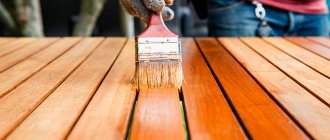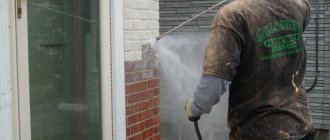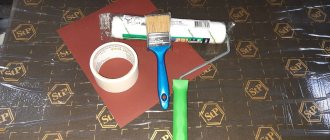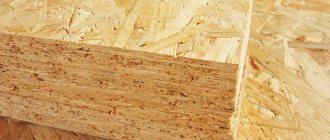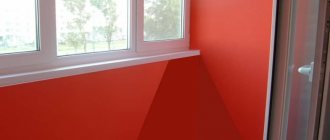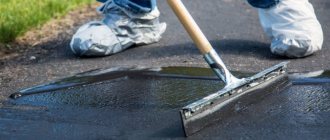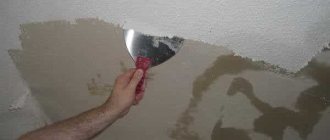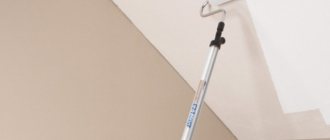Why paint a wooden porch?
Wooden structures can become rotten and fail too early under the influence of the environment. To prevent these processes, various substances are used, these are impregnations and paints, which make it possible to create a protective layer for a long time that will preserve the surface of the product. Painting a wooden porch provides the following types of protection:
- The coating serves as a water repellent;
- Creates a barrier on the surface from mechanical stress;
- They are a protective substance against the formation of mold, fungi and insects;
- Emphasize the natural grain of wood;
- By covering the surface, the desired shade is obtained.
The coating serves as a water repellent.
Which paint is better to choose
To paint a wooden porch at home or in the country, the first thing you need to do is choose the right paint. The choice of paint material will be largely influenced by the answers to the following questions:
- Where is the porch located - on the street, under a roof or under a canopy? Do the steps get rain and snow?
- Do the sun's rays hit the wood directly?
- How many people walk up the steps every day? How intensively will the porch be used?
- What are the maximum temperature changes during the day?
- What type of wood are the steps made of?
All these factors play an important role in determining which paint is best to paint a wooden structure located on the street. Experts advise choosing the following types of paints and varnishes:
- Water-based. These paints do not contain any toxic components harmful to humans. These paints and varnishes have virtually no odor and dry very quickly. Water-based compositions protect wood well from atmospheric agents, fungi, mold and insects. However, these paints have a significant drawback - they do not make the wood more durable. Water-based paint is suitable if you need to paint steps in a country house or in a house, but these dyes are not suitable for a porch where many people pass every day. For example, you should not choose a water-based composition if you need to paint the porch of an office or store, since the steps will quickly lose their attractiveness.
- Oily. This type of paint is used more often than others. Oil-based paints and varnishes provide wood outdoors with reliable, long-term protection from the harmful effects of the environment and abrasion. Although these paints are inexpensive, they wear out quite quickly, and if you paint the porch with this composition, it will take quite a long time to dry. Oil paints are easy to apply with any tool and have good adhesion to any type of wood. Manufacturers offer a wide range of different shades of these materials. If you paint the steps with this paint and varnish composition, the sharp, unpleasant odor will persist for several days, and the original bright color and shine of the coating will quickly be lost during operation.
- Alkyd. They consist of alkyd resins, coloring pigments and hardeners. If you need to paint a wooden porch, along which a large number of people will pass every day, it is better to choose alkyd paint, which is minimally susceptible to mechanical damage. This type of paint and varnish product has many advantages - it is highly resistant to moisture, water, sunlight, temperature changes and other external factors. Among the disadvantages of alkyd dyes are a limited selection of shades and a long drying period. Although the alkyd surface of painted wood is very durable, due to the long drying time, these coloring mixtures are rarely used.
- Acrylic and polyurethane varnishes. Some people prefer not to paint, but to varnish a porch made of wood. For wood processing, the most suitable are acrylic and acrylic-urethane varnish. These paints and varnishes provide wood with reliable protection from the ultraviolet rays of the sun, moisture and water. In addition, they emphasize and highlight the natural texture and pattern of wood. To ensure maximum protection, it is advisable to treat the wood with three to five layers of varnish with an interval of 6-8 hours between each application of the composition. Before varnishing, it is advisable to treat the porch with an acrylic primer.
What should wood be protected from?
It is known that wood cannot withstand the influence of natural factors for long. And in order for the structure to last longer, it is necessary to provide protection from various types of damage. These include:
- Various types of natural precipitation act on the tree itself, destroying it and causing the wood to swell. All this leads to a reduction in the service life of structures;
- Exposure to ultraviolet radiation leads to loss of color of the applied coloring composition, as a result the wood dries out. Cracks appear;
- Biological effects, moisture causes mold and mildew to form on the surface, and various insects also like to inhabit the tree.
All these negative factors can be avoided by painting the surface with special means, but what is the best way to paint wood outdoors in order to get protection that will not peel off? This will be discussed below.
A tree cannot withstand the influence of natural factors for long.
How to choose a covering for outdoor stairs?
When choosing, it is easiest to pay attention to the manufacturer of the paint or varnish. Experts recommend the compositions of these companies:
- Tikkurila;
- Dufa;
- Forester;
- TEXT.
They were created for harsh northern conditions, so they are well suited for our latitudes.
We paint
Before painting, make sure that all important steps have been completed:
- the structure is strong, there are no loose or rotten areas;
- the surface is sanded and thoroughly cleaned of dust and dirt;
- the wood is covered with all necessary impregnations.
Don't forget to use a respirator!
For paint you will need a roller and a brush. First, paint hard-to-reach areas, corners and small details with a brush. Then go over with a roller.
They begin to paint from the lower elements of the porch. Then the fences are covered. Lastly, they proceed to the steps and platform.
The varnish is applied with a brush. Each of the three layers is allowed to dry.
If properly covered, the porch will last a long time. Follow the correct painting sequence and choose quality materials.
Outdoor tree covering
You can order the production and painting of wooden stairs from our company. Russian Ladder completes turnkey work in three days.
Does direct sunlight hit the structure? Staircases exposed to ultraviolet radiation require special compounds that can protect them from harmful effects.
Now you need to properly plan the upcoming work. It can be divided into the following stages:
- Preparatory work;
- Painting process;
- Finish coating.
At the initial stage, the wood is sanded and all visible flaws are removed. The grinding process takes several days. Then there is general cleaning. Then the product is primed, sometimes in several layers. It's good if you have an electric or pneumatic tool, otherwise you will have to use a brush to paint.
Which color should I choose? If you have a pine staircase, the choice is wide and ranges from milky white to brown shades.
Added: 12/20/2016 21:32:44
Recently, wooden houses have become fashionable. Indeed, they just have a lot of advantages, but at the same time they are more demanding to use. For example, a wooden house needs special treatment of the outer layer for normal condition in the future.
What to do before staining
The choice to build a porch made of wood is determined by the positive properties of the material: good appearance, ease of working with it, naturalness. But its natural origin makes the material not durable; without additional protection it is impossible to preserve it for a long time.
In this case, the protection serves to eliminate the effects described above. For this reason, the use of paints and varnishes alone is not sufficient coverage. Other substances should also be used to prevent destruction from moisture, insects, and biological factors.
The choice to build a porch made of wood is determined by the positive properties of the material: good appearance, ease of working with it, naturalness.
Non-varnish coatings
To protect a wooden porch, it is not necessary to use paints or varnishes. Modern manufacturers offer a wide range of specialized non-varnish materials, for example, special wax gels and oil impregnations. Thanks to these materials, you can treat wood once, and this will be enough for 5-10 years. The disadvantage of applying non-varnish material is the high labor intensity of the work. To paint, for example, a porch with alkyd varnish, 2-3 hours is enough, but to treat it with gel or wax mastic will require long-term mechanical polishing.
After applying the non-varnish material, you will get a fairly durable and attractive glossy or matte finish. If the porch is made of wood that has a beautiful texture, then it is better not to paint it, it is advisable to use impregnation or gel.
Oil impregnations are a very popular material for treating wood structures located outdoors. The simplest option is to apply natural drying oil to the surface of the wood. Drying oil hardens in 7-10 days to a hard coating, and it dries touch-free in 2-3 days. Many manufacturers produce oil impregnations; if you follow all the application recommendations indicated on the packaging, you will be guaranteed reliable protection of the wood from adverse effects. Oil impregnations perfectly highlight the natural attractiveness of a wooden porch located on the street and make the wood very beautiful.
Characteristics of paint and varnish material
To choose the appropriate paint option for outdoor boards, you need to study the characteristics of the materials, then it will be easier to understand the variety of products on the market. After all, the many materials that are on sale often confuse buyers, and making the right choice becomes more difficult.
To choose the appropriate paint option for outdoor boards, you need to study the characteristics of the materials.
Ready-made protective compounds
The surface of the wood is not uniform. It contains various pores, knots, and roughness. Therefore, before painting a wooden porch, it is sanded. This helps to obtain an even distribution of material over the entire surface. And then they are processed using the following means:
- Impregnation against moisture;
- Antiseptics against biological formations;
- Fire retardant to reduce wood's ability to ignite.
These products must be applied one at a time, in the order listed.
Sanding helps to achieve an even distribution of material over the entire surface.
What can replace special products?
To save money, you can use more affordable materials that may be on hand:
- Drying oil against moisture;
- Used engine oil, protection from moisture and the surface becoming rotten;
- Potassium permanganate as an antiseptic;
- Slaked lime, against bacteria, is applied to cuts and ends.
To save money, you can use more affordable materials that you may have on hand.
Video description
That video demonstrates the behavior of steps made of wood not under a canopy 2 years after treatment with a composition containing oils and wax:
It is worth noting that in some recommendations there is a mention of used engine oil. In the case of a porch, it is better to refuse such a decision. This is justified by a number of significant shortcomings. The unpleasant odor of the material persists because it does not dry completely. For the same reason, when water gets on the treated steps and floor, the surface becomes slippery. The color of the base becomes close to gray-brown. Machine oil is also flammable, which is not safe for flammable wood.
Behavior of wood after treatment with used machine oil Source yandex.net
Types of decorative coatings
How to paint a wooden porch to get a reliable coating? Paints and varnishes can have not only a decorative function, but also contain protective components. Before purchasing, it is important to study their properties, color, texture.
Paints and varnishes can have not only a decorative function, but also contain protective components.
Paints
Colorful substances are produced in different ways, they can have hiding power, or, on the contrary, preserve the wood pattern, creating only a tint effect:
- So, outdoor wood preservative paint that creates a new color will be better suited to an old structure. It will help hide defects; I can use it to cover places where the finishing has peeled off;
- Option 2 is applicable only for the first painting of new structures.
You need to choose from materials that are suitable for exterior finishing, have moisture-repellent properties and change temperature indicators.
Colorful substances are produced in different ways, they can have hiding power, or, on the contrary, preserve the wood pattern.
Varnishes and impregnations
Transparent varnishes will highlight the natural grain of the wood, creating a reliable protective film on the surface. But they are not suitable for the only means of covering stairs. They can be applied to steps only on top of the paint. A great option for painting outdoor railings.
If the dacha house itself is not painted or covered with facing material, then in order not to create a contrasting porch that will not look appropriate, you can resort to impregnation. Depending on the type, they give a glossy or matte finish. Preserving the natural grain of the wood, making dark fragments even darker.
Transparent varnishes will highlight the natural grain of the wood, creating a reliable protective film on the surface.
Comparative characteristics of dyes for external works
The choice of composition is influenced by cost, service life, and consumption. According to these criteria, the varnish has the highest cost, with the lowest consumption. Can last up to 8 years.
Enamels are cheaper than varnishes, about 2 times, but their consumption is much higher, with a service life of 6 years. Oil paints are even cheaper, consumption is approximately the same as enamels, and this coating will last 5-7 years. Acrylic products have the lowest price, average consumption, and the longest service life of up to ten years.
Acrylic products have the lowest price, average consumption, and the longest service life of up to ten years.
Which composition to choose
In order to make the right choice, you need to focus on the following criteria:
- Color, whether the property of hiding is necessary, or whether the texture needs to be preserved;
- Climate of the area, what maximum temperatures occur (lowest and highest);
- Humidity. General humidity, and frequency of precipitation.
In order to make the right choice, you need to focus on certain criteria.
How to cover the steps in the house?
- Concrete. A popular type of stairs is concrete structures. They are often chosen when organizing entrance groups, moving between floors, often in multi-storey buildings. These are durable structures, characterized by reliability and wear resistance. Despite the stated advantages, there is an important nuance. Concrete is a material that is afraid of moisture. Under its influence, it quickly begins to collapse. Therefore, what concrete steps are covered with must be moisture resistant, protecting the structure from climatic influences. The most common choices are tile or wood. There are also coloring options, but they are not popular;
- Stone. Not often, but there are staircases made of stone. This material is self-sufficient and does not require decorative finishing. Certain types of stone require treatment with wax or acrylic-based varnish. This is done to preserve the material and develop the color;
- Glass. Like stone, glass structures look complete and do not require decorative finishing;
- Tree. Due to its accessibility and comparative ease of use, wood is often chosen when creating stairs, especially interfloor ones in private individual houses. It can be used as an independent material that does not require decoration, and also as a base that needs to be finished. At the same time, wood is a very vulnerable material - it is afraid of moisture, insects, etc. It must be treated with various protective agents, as well as covered with varnish or facing material. If there is no decorative finishing, then the tree itself must be brought into an attractive form. Eliminate defects using putty or polishing, or a grinder;
- Metal. The organization of entrance groups, as well as interfloor stairs, can also be made of metal. The material itself is not very attractive and requires decorative finishing. The metal is first treated against corrosion, and then finishing (wood or other coatings) is used.
Any staircase, regardless of type, requires finishing. It can be primary, performed immediately after the construction of the structure, or secondary, when old coatings are replaced with new ones.
- Carpet. Perfectly fits on wooden and concrete bases. The coating itself is warm and soft compared to the others. It is pleasant to walk on it with bare feet and the risk of injury by hitting the corner of a step is not great. Caring for the coating is quite simple with a vacuum cleaner;
- Laminate. Cheap replacement for wood trim. It will last a little less than its natural counterpart, but will not creak over time. It is unpretentious in care - just wet cleaning is enough. Installing it is also quite simple;
- Tree. Valuable breeds will look chic and elegant, but will cost a pretty penny. In addition, the coating requires protection from insects and more careful maintenance. Styling it yourself can also be challenging;
- Tile. Not the best option for interior finishing work. The material is cold and unpleasant to walk on barefoot. In addition, corners can easily cause serious injury. Laying cladding is difficult and expensive;
- Stone, like tiles, is not practical in a private home;
- Monolithic overlays for steps C3. Easy to install and maintain. They have a pleasant appearance. Pairs perfectly with any base.
- Tile. There are many options on the market, different in both color and texture. Specifications also vary from model to model. At the same time, there are modifications: clinker, porcelain stoneware and ceramic. They are produced using different technologies, which affect their performance characteristics;
- Rubber mats, crumb coatings, etc.;
- Laminate or wood. The latter can be used not only as a base, but also as a finishing material, especially if these are valuable species;
- Stone. Granite and marble are also used for cladding unsightly bases;
- Carpet.
Sooner or later, dirt will appear on a smooth varnished surface. Wooden stairs can only be cleaned with a special technical shampoo that does not destroy the varnish. You can find such a product in a flooring store - different manufacturers offer shampoos in the form of an aerosol or a concentrate for dilution with water. It would be ideal if you manage to find a “cleaner” from the same manufacturer as the varnish used to cover the stairs.
In fact, this alternative has been around for a long time. In ancient mansions in Europe and Russia, authentic wooden staircases have been preserved, which are more than 200 years old, but they still look great. And all because a combination of “oil + wax” was used to preserve them. That is, the alternative is modern wax-based wood protection products. They are applied to the surface after impregnation with varnish, and this procedure is quick and easy.
Rules for painting a wooden porch
To get a reliable layer that will reliably protect the surface, you need to pay special attention to the choice of what to paint the porch with. You shouldn’t skimp, a quality product will last longer, which means it won’t peel, and you won’t have to repaint it too quickly. You should also perform all the stages of work that will be described below.
It is better to start by painting small relief areas; they are painted over with a brush, and it is more convenient to cover a flat surface with a roller.
It is better to start by painting small relief areas; they are painted over with a brush.
How to paint a porch correctly
The process itself is simple. But it requires surface preparation. Cracks are filled with putty; after drying, a wood primer is applied to improve adhesion to materials.
The antiseptic is applied with a fleecy roller or brush. Painting should be carried out on all elements: ends, railings, steps, racks, the boards themselves are painted on all sides. The tool usually used is a roller or brush.
Painting must be carried out on all elements.
Main reasons for staining wood
Wooden surfaces need additional protection. The use of impregnations, stains or varnishes will provide the following:
- Prevents the penetration of moisture into the wood structure. The water-repellent layer formed by the dyes will help to avoid such troubles as the occurrence of rot or fungus, which impair the strength of the material and often cause its premature destruction.
- Mechanical protection. Painted surfaces are more resistant to chips and cracks. Cracks not only spoil the appearance, but also make the tree more vulnerable to the influence of external conditions.
- Repels wood-boring insects, which can greatly damage the strength of the wood structure.
In addition, applying a paint coating will help either highlight the beauty of the wood or hide the imperfections of the old board.
Coloring sequence
Before painting a wooden porch on the street, carry out the following steps, in the order given:
- Repair of the building, all defects are eliminated;
- Treatment of small defects using a putty solution;
- Sanding begins after the putty has dried;
- Cleaning the surface from formed debris and dust;
- Coating with protective substances, each layer must dry;
- Painting.
Coating with protective substances, each layer must dry.
How to veneer a porch yourself
Next, we’ll look at how to tile a porch correctly. Since the street staircase is a place of increased mechanical loads and is constantly exposed to adverse natural factors, it must be clad in strict compliance with all required technologies.
The porch is constantly exposed to some unfavorable natural factors
Ceramic cladding
First, let's look at how to line the stairs outside the house with ceramics. Finishing in this case is carried out in several stages:
- Puttying and grouting eliminate all surface defects;
- The porch is primed;
- Laying tiles begins from the top platform;
Important: When using tiles outdoors, you cannot cut off the elements too much (at least 70% of the original area must remain). Pieces that are too small will fly off quickly.
- The glue layer should not exceed 1cm. It should be applied to both the trim and the porch. First you need to cover the riser with material, then the tread. The facing of both elements begins from the corners;
During installation, the adhesive is applied to the surface of the porch and the material with a notched trowel.
- At the next stage, the ends of the porch are faced. If they are tall, they should first be reinforced with mesh;
- About two days after finishing the cladding, the joints are grouted.
Grouting of joints is carried out two to three days after laying the tiles
Tip: Before laying, you should lay out the tiles without glue to figure out the order in which the elements should be placed.
How to tile a porch (video):
Installation of paving slabs
Paving slabs are attached to the porch using cement glue. First, the corner elements are installed. Then the intermediate ones are attached. Finishing the porch with paving slabs begins from the bottom up - from the first step. The tread is covered first, then the riser is finished.
Porch finishing with tiles. Photo of the steps facing
Important: When installing, you should ensure that the seams between the elements match perfectly. Otherwise the finish will not be very beautiful.
Porcelain stoneware finishing
The cladding of the porch with porcelain stoneware is done in exactly the same way as with clinker tiles. Just use a special glue designed specifically for this material. In this case, preliminary priming of the surface is also required.
Porcelain tiles for the porch are cut with a grinder with a diamond blade or a tile cutter specially designed for this material.
Porcelain stoneware is cut with a special tool - a tile cutter.
Features of stone cladding
The technology for laying stone is also similar to the method of ceramic cladding. When using porous stone, the porch surface material is also primed. The stone trim is pre-laid “dry” for cutting.
In this case, the cladding begins from the bottom step. First the riser is covered, then the tread. When finishing, glue is applied to both the porch and the tiles. After laying the element on the porch, it is trimmed and lightly hammered with a rubber hammer.
Only porch steps can be covered with granite
Important: When finishing the porch with stone, you should carefully ensure that the glue does not get on its front surface. The fact is that this product hardens quickly and is very difficult to remove.
The stone is laid at the ends of the porch and parapet as follows:
- The surface of the facade is first carefully leveled and primed;
- Next, a metal mesh is attached to it (using galvanized nails);
- Standard stone tiles 16*35*2 can be fixed to an end up to 2.5m high simply with cement glue. When cladding the façade with larger slabs, metal hooks (to the mesh) and pyrons are additionally used to connect the elements together.
A wide variety of stones can be used to clad the façade of the porch.
Important: Before facing with natural stone, a poured concrete or brick-lined porch must stand for at least 5-6 months. Otherwise, during the shrinkage process, the cladding may crack.
Thus, we have figured out how to cover the porch with tiles and natural stone. If you carry out the work strictly adhering to the required technologies, the result will be a beautiful and durable finish.
Advice from professionals
If the old finish has peeled off, you need to remove it. Boards with fungus are removed and replaced with new ones. Or they eliminate these zones using copper sulfate.
It is better to paint the surface along the grain. To make dark areas whiter, treat them with bleach. To prevent the boards from slipping in winter, they are covered with special tapes, overlays, etc.
It is better to paint the surface along the grain.
Painting wood will help extend its service life, and a wooden porch will look more beautiful. It is important to choose the right product, follow the work steps, then you won’t need to re-coat the surface for a long time.
